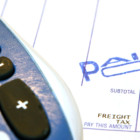[Editor’s Note: Over the next few weeks on Payables Place, we’re publishing some “best of” 2019 articles as we reflect on the year and prepare for the new year ahead.]
Why do some supplier eInvoicing and payment initiatives succeed while others fail? The answer usually comes down to supplier enablement. Adoption is key for any program to succeed and those that do the upfront work to get suppliers onboarded are the ones that achieve the most success in terms of invoices being submitted and payments transacted electronically. This will not come as a surprise to anyone who has worked in AP or Procurement for any significant length of time. Suppliers are key stakeholders that must be considered as integral to any AP eInvoicing or payments transformation initiative. Over the course of my years in P2P, I’ve witnessed too many projects fail because companies don’t adequately consider the amount of planning and (hard) work that is required to get suppliers onboarded. If suppliers are unable—or unwilling—to change, the overall success of an AP automation (eInvoicing, workflow, payments, etc) initiative will ultimately be severely impacted and achieving maximum success as it relates to time, cost, process improvements, working capital, will all be negatively impacted. In the end, AP will not achieve the ROI they expected if suppliers refuse to make the necessary changes.
Suppliers Drive ePayment Adoption
Electronic payment methods are not new. Wire transfers, for example, have existed since the late 1800s, while commercial credit cards have been in use since the 1930s, and Automated Clearing House (“ACH”) payments started in the 1970s. In other words, these are mature solutions that have been in operation for years and remain accessible for enterprises of all sizes. Given this reality, it is easy to wonder why more enterprises have not tried to shift a greater percentage of their supplier payments to electronic methods.
To be quite frank, the problem is a combination of enterprise inertia and supplier reticence. Supplier hesitation about ePayments is, from a historical perspective, completely understandable. For ACH payments to work, suppliers must share their bank account information with clients (depending on bank, this may be true with wire transfers as well). If a supplier accepts a commercial card for payment, they must pay an interchange fee—a percentage of the amount—and forgo that percentage of payment.
These are not the only changes that a supplier must make to accept an electronic payment, but in some cases these are enough to make a supplier hesitate. In Ardent’s 2018 State of ePayables research report 34% of organizations said that two of the top barriers suppliers accepting electronic payments were lack of technical resources and lack of technology to participate. Paper checks, on the other hand, are comparatively easy to accept, and for many businesses, still a preferred way of receiving payment. We all know that paper checks are costly, time consuming, error prone, slow, and yet almost half the payments in the B2B world are still made with them. Outside of the United States, payment by paper check is more and more rare. In the US, you would be hard pressed to find anyone under the age of 30 who still uses paper checks as a form of payment but in the business world they remain highly used and a source of familiarity. As such, many suppliers may not see a reason to make a change.
This reality means that the adoption of ePayments is not growing nearly as fast as it should. So long as suppliers hesitate, buying organizations will resist transitioning to ePayments … no matter the advantages. However, Ardent’s 2018 State of ePayables research study shows that some progress is being made, albeit slowly. Fully 59% of payments are now made electronically —the highest percentage Ardent has seen in the more than 10 years its analysts have conducted AP-focused research. Could mark a tipping point for ePayment adoption? Maybe, but only if enough enterprises pay attention to supplier enablement.
The Importance of Supplier Enablement Programs
A willingness to accept ePayments is a good first step, but willingness does not automatically translate into getting paid electronically. Part and parcel of automating supplier payments is a well thought-out supplier enablement program, which can determine whether a payment automation project succeeds or not. Bear in mind that four of the top barriers to ePayments adoption are supplier related, so keeping suppliers happy is of paramount importance when switching to electronic payments.
Suppliers that have historically accepted only paper checks may not know about the benefits they can accrue from accepting ePayments. These advantages include greater visibility into payment status, improved remittance information, and efficient payment reconciliation—all of which can help save suppliers’ time and money in the long run. Buyers that take the time to actually communicate with their suppliers about these benefits, which is part of a supplier enablement program, actually end up more likely to make a successful switch to ePayments.
Organizations that do not regularly communicate with their suppliers, however, may find that their payment automation project ends up failing to achieve a successful ROI. After all, what good is the capability to pay a supplier electronically if a majority of the supplier base only accepts paper checks?
An effective supplier enablement program is critical to the success of both payment and invoice automation projects. If an enterprise does not get enough suppliers to accept ePayments or submit invoices electronically then the enterprise will not maximize their return on investment and the project may ultimately fail to achieve the desired results. Using a supplier enablement program and regularly communicating with the supplier base, however, ends up being the recipe for success. Many ePayment, eInvoicing, and AP Automation solution providers have realized that in order for their programs to be successful, they need to get involved and work directly with their customers’ suppliers in order to ensure they successfully get onboarded because, after all, it is in their best interest, as well as their clients’ to maximize the number of transactions going over their networks. So if you have an ePayment or eInvoicing initiative already underway, or are thinking about starting one up in the near future, make sure that part of your plan includes a supplier enablement program that will maximize the numbers of suppliers participating in the program.



